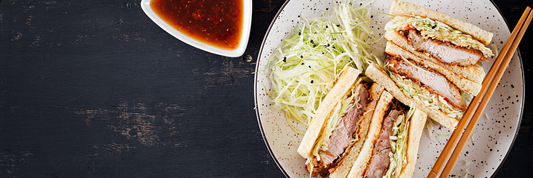Shrink wrap is a versatile packaging material widely used across industries to protect, preserve, and bundle products. Made from polymer plastic film, shrink wrap tightly conforms to the shape of items when heat is applied, providing a secure and tamper-evident seal. From food packaging and retail goods to industrial equipment, shrink wrap offers a practical solution for safeguarding products during storage and transportation. As businesses increasingly prioritize efficiency, product safety, and visual appeal, shrink wrap has become an essential tool in modern packaging strategies.
-
Stretch Film vs. Shrink Film: What’s the Difference and Which is Right for You?
-
Different Types of Packaging and Their Uses – Best Packaging Solutions for Your Business
-
Is Bubble Wrap Recyclable? A Guide to Sustainable Packaging
What is Shrink Wrap?

Shrink wrap is a versatile packaging material that wraps around products to provide protection and a clean presentation. At its core, shrink wrap is a plastic film that shrinks when heat is applied. This process causes the film to snugly conform to whatever it encapsulates, providing a secure barrier.
How shrink wrap works (heat application process)
The functionality of shrink wrap relies on a simple thermal process. Initially, the film is placed around the item to be packaged. When heat is applied usually through a heat gun or shrink tunnel the material shrinks tightly to the shape of the product. This transformation creates a tight seal that adheres to the item, ensuring an impressive fit while safeguarding it from environmental factors.
Materials used in shrink wrap (PVC, Polyolefin, Polyethylene)
Various materials are used to manufacture shrink wrap, each offering unique benefits:
- PVC (Polyvinyl Chloride): Widely used due to its excellent clarity and affordability, PVC shrink wrap provides good durability but can release harmful gases when burned.
- Polyolefin: This material is a preferred choice for food packaging and other sensitive items due to its resistance to punctures and heat. It's also less toxic than PVC.
- Polyethylene: Known for its flexibility and toughness, polyethylene shrink wrap is often used for larger items or bulk packaging. It protects items from moisture and dust without sacrificing clarity.
Types of Shrink Wrap Materials

PVC shrink wrap
PVC shrink wrap is known for its stretch and strength, which makes it suitable for a variety of applications, including retail packaging. However, it is less forgiving on sharp edges, which can puncture the film.
Polyolefin shrink wrap
Polyolefin is recognized for its toughness and resistance to heat. It also has a soft feel, making it comfortable to handle. This type of shrink wrap is favored for food products because it is more environmentally friendly than PVC and does not emit harmful chemicals when heated.
Polyethylene shrink wrap
This type of shrink wrap stands out for its versatility. Its thickness makes it suitable for industrial applications, such as packaging heavy machinery or pallet loads. It is also effective in protecting items against moisture and dirt during storage.
Biodegradable and eco-friendly shrink wrap options
With growing environmental concerns, there has been a rise in biodegradable shrink wraps made from plant-based materials. These alternatives decompose more naturally than conventional plastics, appealing to businesses aiming to reduce their carbon footprint.
Common Uses of Shrink Wrap

Packaging consumer goods (electronics, food, cosmetics)
Shrink wrap is a popular choice for packaging consumer goods such as electronics and food products because it offers a clear view of the item while providing a protective barrier. The tight seal protects against dust and moisture, which is crucial for preserving the quality of food.
Industrial shrink wrapping (pallets, machinery)
In industrial settings, shrink wrap is commonly used to secure pallets and machinery. By stabilizing products during transport, it helps prevent damage and makes handling easier.
Shrink wrapping boats and large equipment
Shrink wrapping is an excellent solution for protecting boats and larger equipment from the elements. By providing a waterproof and UV-resistant barrier, it preserves the value of these significant investments.
DIY uses: gift baskets, storage protection
Shrink wrap can also serve a variety of DIY purposes. Creating gift baskets becomes more charming with shrink wrap, as it adds a polished look. Additionally, using it for storage protection keeps items safe from dust and moisture, helping them last longer.
Benefits of Using Shrink Wrap

Protection from dust, moisture, and damage
One of the most significant benefits of shrink wrap is its ability to serve as an effective barrier against dust and moisture. This protection is essential for ensuring that products remain in pristine condition until they reach consumers.
Tamper-proof security
Shrink wrap provides a level of tamper-proof security. If someone attempts to open the packaging, the film will show visible signs of disturbance, offering peace of mind to both manufacturers and consumers.
Cost-effective packaging solution
Using shrink wrap as a packaging solution can be economical for businesses. Its lightweight nature can lower shipping costs, while its ability to secure multiple items can result in savings on logistics.
Enhances product presentation and shelf life
A well-wrapped product presents a professional image that can attract customers. Additionally, shrink wrap can help extend the shelf life of products, particularly food items, by reducing exposure to air and contaminants.
How to Use Shrink Wrap Correctly
Using shrink wrap can be straightforward if you have the right tools and-by-step guidance. Here's how to get started.
Tools needed
- Shrink wrap film: Available in various sizes and thicknesses, it’s essential to choose the right type based on your product.
- Heat gun or shrink tunnel: A heat gun is perfect for smaller jobs, while a shrink tunnel is better for larger-scale operations.
Step-by-step shrink wrapping process
- Prepare the product: Clean and organize the items you want to wrap. If applicable, group multiple items together.
- Cut the shrink wrap: Measure the required length of film, allowing enough extra to cover the product and create a seal.
- Wrap the product: Place the shrink wrap over the product, ensuring it is taut and covers all areas.
- Seal the edges: Use a heat gun or shrink tunnel to apply heat evenly across the wrap. If using a heat gun, keep it moving to avoid melting the film.
- Cool down: Allow the shrink wrap to cool, solidifying its tight fit around the product.
Safety tips when applying shrink wrap
- Always wear protective gloves to avoid burns from the heat gun.
- Work in a well-ventilated area to prevent inhaling any fumes from the plastic.
- Be cautious around flammable materials or surfaces when using the heat source.
Shrink Wrap vs. Stretch Wrap: What's the Difference?
Key differences in material, application, and purpose
- Material: Shrink wrap is a plastic film that shrinks tightly around the product when heated, while stretch wrap is an elastic plastic film that is stretched around items to secure them.
- Application: Shrink wrap is typically used for packaging items that need a tight, form-fitting seal, whereas stretch wrap is often used for palletizing and bundling items together.
- Purpose: Shrink wrap provides protection against dust, moisture, and tampering, while stretch wrap generally secures products for shipping and storage.
When to use shrink wrap vs stretch wrap
- Use shrink wrap when you need a tamper-evident seal such as packaging food items or consumer products.
- Choose stretch wrap for securing multiple products together or when wrapping pallets, as it provides stability without needing heat.
Choosing the Right Shrink Wrap for Your Needs

Factors to consider: size, thickness (gauge), type of product
- Size: Select a roll size that suits the dimensions of your products.
- Thickness (gauge): Thinner wraps are less durable but more cost-effective; thicker wraps offer better protection and durability.
- Type of product: Consider the nature of your items. For example, food products require specific shrink wraps that are safe for direct contact.
Choosing between manual vs automatic shrink wrap systems
- Manual systems are cost-effective for small businesses or occasional use. They require more labor but provide flexibility for various products.
- Automatic systems are ideal for higher-volume operations. They reduce labor costs and increase efficiency, but require a larger upfront investment.
Top shrink wrap brands in the market
- Sealed Air: Renowned for quality and variety, including food-safe options.
- Uline: Offers a wide range of shrink wrap films suitable for various applications.
- Polyair: Known for their eco-friendly options and robust films.
Environmental Impact and Sustainability of Shrink Wrap
Recycling shrink wrap materials
While shrink wrap can be recycled, most curbside programs do not accept it. It's crucial to find local recycling options or specialized facilities.
Eco-friendly innovations in shrink wrapping
Many brands are now producing biodegradable and compostable options, minimizing environmental footprints. Innovations in manufacturing processes also reduce plastic wastage.
Best practices for sustainable shrink packaging
- Opt for reusable materials whenever possible.
- Educate customers about proper disposal and recycling options.
- Invest in biodegradable shrink wraps to lessen environmental impact.
Conclusion
Shrink wrap is a versatile and essential packaging solution for various industries, offering protection and presentation for products. By understanding the different types and applications of shrink wrap, you can select the most effective options for your needs. Remember




